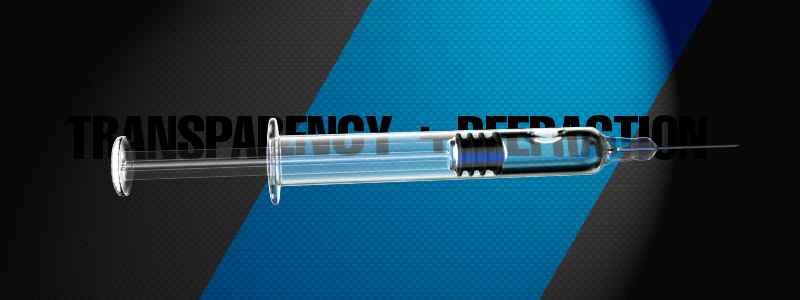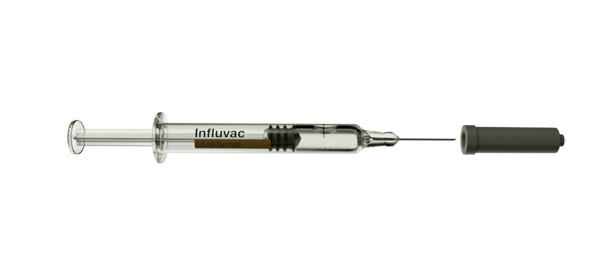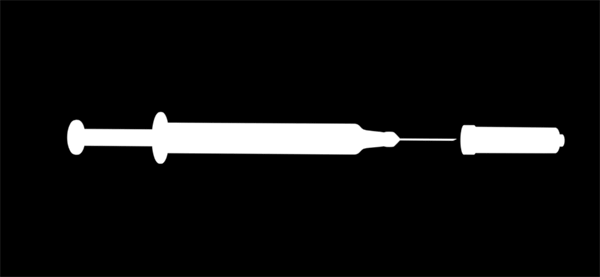
OK I've been playing around and came up with the result above, which combines transparency and a mix of fake and real refractions.
Here are the steps I followed.
1/ render a RGBA picture with the material "glass fake falloff", as advised by Abstrax (on the glass and liquid)
2/ make another render with regular physically correct glass.
3/ In Photoshop, apply the alpha of the first render to the second render.
4/ Tweak the levels of this alpha channel (bump the contrast a bit, depending on what you want)
5 /Make a Background in photoshop
6/ The refraction of the letters behind the serynge are Photoshop cheating, with alpha masks and a contraction filter on the letters.
It's manageable to cheat the eye in still images, but this process would be very very tough to achieve in animation (the refraction part of it)







